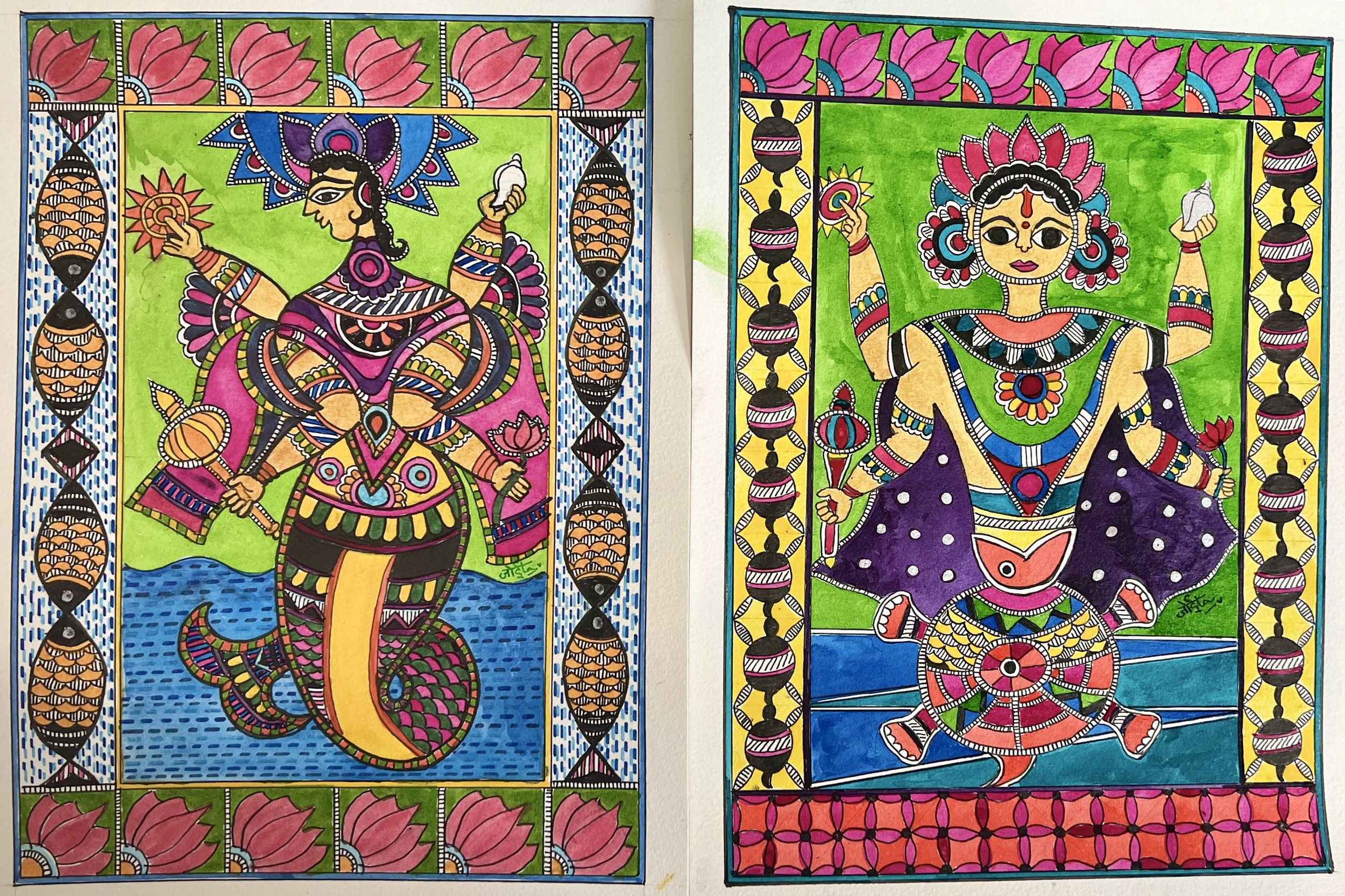The Art of Simplicity: Lessons on Structure from Folk Art
I've landed a cool commission to paint the Dash-avatars, also known as the Ten Avatars of Lord Vishnu. Couple decades ago, I started my journey in the world of art with Indian folk art. It feels kind of fitting to kick things off with a nod to my roots. As I was working on this series, I realized the profound impact it had on my vision as a Product leader and the valuable lessons it offers for all of us.
Let's begin by understanding what folk art really is. It's essentially art for the everyday person. It's born from the simplicity of rural life, where artists use readily available materials and draw inspiration from their surroundings - nature, community, and everyday experiences.
Now, this simplicity isn't a limitation. In fact, it's a powerful choice. Folk artists deliberately opt for straightforward compositions and bold lines. Why? Because they know that simplicity communicates a message clearly and immediately. It doesn't need fancy embellishments to convey its meaning.
Here's where the magic of structure comes in. Folk art may appear simple, but it's far from haphazard. Every element, every stroke of the brush or chisel, has a purpose. It's like a carefully constructed sentence in a story - not a word out of place.
Folk art ensures the message is crystal clear. You don't need an art history degree to 'get' it. Just look at it, and you know what it's saying.
Lesson: Clarity is key. Products should convey their purpose immediately. A user shouldn't have to hunt for functionality or meaning.
Folk art is often rich in symbolism. Every flower, every animal, every color - they all mean something. It's storytelling without words.
Lesson: Symbolism can be powerful. Every button, icon, or color choice should be intentional, conveying a message or aiding the user in their journey.
Many folk art forms draw inspiration from the natural world, incorporating depictions of landscapes, animals, and celestial bodies.
Lesson: Nature-inspired design elements can create a sense of familiarity and comfort for users. Incorporating organic shapes, colors, or metaphors can enhance user engagement.
Folk artists carefully balance their compositions. It's like a well-structured essay - a beginning, middle, and end, with each part complementing the other.
Lesson: A cluttered interface or an overloaded product can overwhelm users. It's about creating harmony.
Folk art often reflects cultural, religious, or community traditions. It's deeply rooted in the context from which it emerges.
Lesson: Understanding the context of your users is vital. To be user-centric, designers must consider the cultural context of their target audience, fostering a sense of connection and belonging.
Folk art often tells a story or conveys a message. It's not just a random assortment of shapes and colors; it's a visual narrative.
Lesson: Storytelling is a powerful tool. Users engage more deeply with products that tell a story or take them on a journey. Products that guide users through a narrative create memorable experiences.
Here are the first two paintings from the series: Matsya Avatar (The first avatar of Vishnu, Fish) and Kurma Avatar (The second Avatar of Vishnu, Turtle). A simple symbology of the four hands holding the symbolic attributes of Vishnu.
So, next time you come across a piece of folk art, take a moment to appreciate the lessons it offers. Simplicity doesn't mean lack of depth; it's a conscious choice to focus on what truly matters. And structure isn't about rigidity; it's about creating harmony and conveying meaning.
In our fast-paced world, where complexity often reigns, folk art reminds us that sometimes, the simplest things are the most profound. Embrace the wisdom of folk art, and you might just find your designs - whether they're paintings, products, or anything in between - resonate more deeply with those who encounter them.
